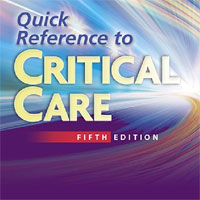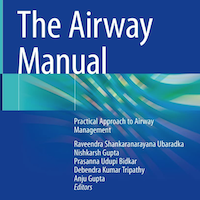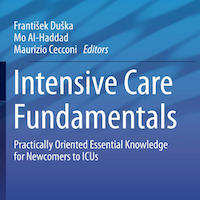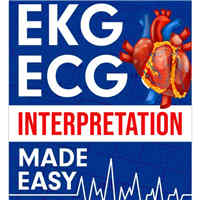
Guidelines for the Diagnosis and Management of CIRCI in Critically Ill Patients
This part II of the guidelines for the diagnosis and management of critical illness-related corticosteroid insufficiency (CIRCI) in critically ill patients is related to acute illnesses that may be complicated by CIRCI. We... read more

Human limb skeletal muscle wasting and architectural remodeling during five to ten days intubation and ventilation in critical care
Using ultrasound, we have been able to demonstrate that muscle thickness and architecture of vastus lateralis undergo rapid changes during the early phase of admission to a critical care environment. Muscle loss in critically... read more

Airway Management Techniques during Massive Regurgitation, Emesis, or Bleeding
Friend to the show, Jim DuCanto has been obsessed with SALAD. Not the leafy greens delicately touched with a tart emulsion, but with Suction Assisted Laryngoscopy and Airway Decontamination (SALAD). Jim DuCanto, MD is an... read more
ECMO – How can I make the best referral?
Extracorporeal membrane oxygenation or ECMO is one of those treatments we sometimes need to think about with our very sick patients. I recently had to make a referral to my local centre and doing so made me wonder what it... read more

Petition to Retire the Surviving Sepsis Campaign Guidelines
Concern regarding the Surviving Sepsis Campaign (SSC) guidelines dates back to their inception. Guideline development was sponsored by Eli Lilly and Edwards Life Sciences as part of a commercial marketing campaign. Throughout... read more

Limiting Sedation for Patients with ARDS
Current evidence supports the use of protocol-based, light-sedation strategies in critically ill patients with ARDS. Further research into sedation management specifically in ARDS populations is needed. Deep sedation strategies... read more

The Real Doctor Will See You Shortly: A Physician’s First Year
In medical school, Matt McCarthy dreamed of being a different kind of doctor—the sort of mythical, unflappable physician who could reach unreachable patients. But when a new admission to the critical care unit almost died... read more

Ketamine Alters Hippocampal Cell Proliferation and Improves Learning in Mice after TBI
Ketamine alters hippocampal cell proliferation after traumatic brain injury (TBI). Surprisingly, these changes were associated with improvement in a neurogenesis-related behavioral recall task, suggesting a possible benefit... read more

Advances in Critical Care Management of Patients Undergoing Cardiac Surgery
Cardiac surgery has been evolving to include minimally invasive, hybrid and transcatheter techniques. Increas‑ing patient age and medical complexity means that critical care management needs to adapt and evolve. Recent... read more
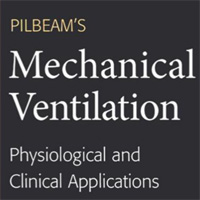
Mechanical Ventilation: Physiological and Clinical Applications
Known for its simple explanations and in-depth coverage of patient-ventilator management, this evidence-based text walks readers through the most fundamental and advanced concepts surrounding mechanical ventilation and guides... read more
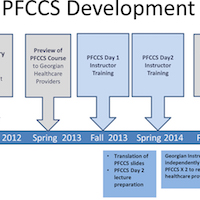
A Fundamentals Train-the-Trainer Approach to Building Pediatric Critical Care Expertise in the Developing World
Pediatric Fundamental Critical Care Support (PFCCS) is an educational tool for training non-intensivists, nurses, and critical care practitioners in diverse health-care settings to deal with the acute deterioration of pediatric... read more

The A1 Sedation Package: Better Care for Intubated Patients
You are called to the scene of a 56-year-old male found unresponsive in his garage workshop. Upon examining him you find him minimally responsive to painful stimulus, moaning and groaning. His family tells you he has high... read more

Trauma Room Two
In every hospital emergency department there is a room reserved for trauma. It is a place where life and death are separated by the thinnest of margins. A place where some families celebrate the most improbable of victories... read more

Pre-hospital advanced airway management by anaesthetist and nurse anaesthetist critical care teams
When performed by experienced physician anaesthetists and nurse anaesthetists, pre-hospital tracheal intubation was completed rapidly with high success rates and a low incidence of complications. The critical care teams attended... read more
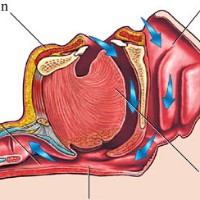
Techniques for the Difficult Airway
A systematic approach to intubation that emphasizes planning and teamwork can reduce intubation complications. Early use of an EGA or cricothyroidotomy may reduce complications when oxygenation is inadequate. Use of a gum... read more

Sophia Observation Withdrawal Symptoms-Pediatric Delirium Scale
The SOS-PD scale shows promising validity for early screening of Pediatric Delirium (PD). Further evidence should be obtained from an international multicentre study. A total of 2088 assessments were performed in 146 children... read more

Drowned: Nurses Under Water
Nurses are expensive. We are the largest professional workforce in healthcare, and with over 3.1 million professional nurses in the country, it appears that we are large in number but small as a priority. Nurses are overworked.... read more



